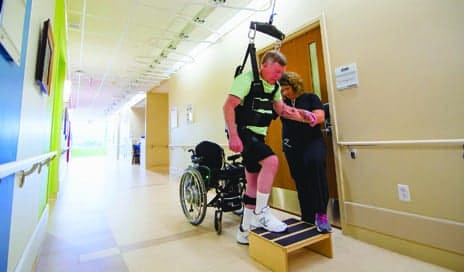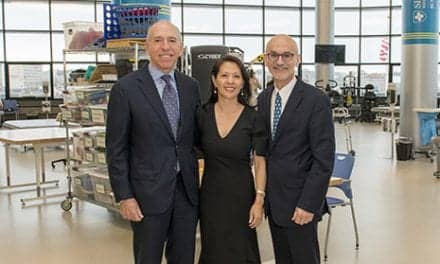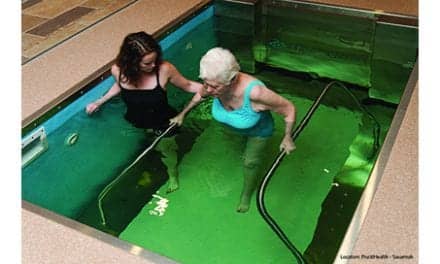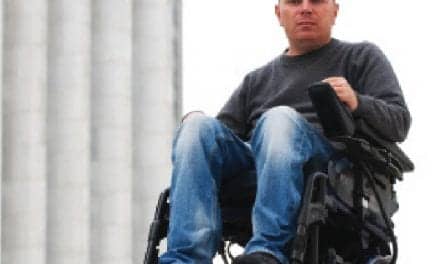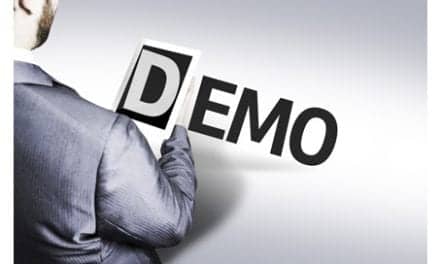
Therapeutic interventions should be tailored to promote neurorecovery and allow for plasticity and learning. Interventions should be task specific, allow for high repetition of training, provide feedback regarding performance of task, and allow for error in safe environments.
by Kristina Simpson, PT, MSPT
It is estimated that there are approximately 12,500 new cases of spinal cord injury (SCI) each year in the United States. According to The National SCI Statistical Center, approximately 66% of spinal cord injuries are incomplete injuries—45% being incomplete tetraplegia and 21% incomplete paraplegia. The American Spinal Injury Association defines incomplete injuries as those that spare motor or sensory function below the level of injury. With 66% of spinal cord injuries classified as incomplete injuries, physical therapists are in need of a variety of interventions to promote motor recovery to maximize functional outcomes.
After SCI, mobilization and gait training may be initiated early in inpatient rehabilitation. However, consideration should be made with regard to orthostatic hypotension, respiratory status, spinal stability, and spasticity management. Orthostatic hypotension, or a decrease in blood pressure in an upright position, is likely after SCI in both sitting and standing. Symptoms can be managed and alleviated with a combination of wearing compression stockings, compression wraps to the lower extremities (to either the knees or the thighs), and with the use of an abdominal binder. A tilt table can be used to acclimate the body to an upright posture if orthostatic hypotension is a limiting factor with the progression of early gait training. In extreme cases, a physician can prescribe midodrine hydrochloride or a similar medication to assist in managing symptoms.
A compromised respiratory status is common with both incomplete tetraplegia and paraplegia. Gait training may be initiated with both portable ventilators and tracheostomies with proper coordination between the physical therapist, physician, and respiratory therapist. Spinal stability should be assured prior to upright activity. In some cases, especially with stabilization and fusion to the lower lumbar segments, increased extension through the spine in standing can compromise bone healing. Finally, spasticity is very common with incomplete injuries. In most cases, it has been recognized that management with medication should be the last resort as these inhibit the nervous system. Range of motion, weight bearing, functional electrical stimulation, and/or overnight bracing with passive- resistive ankle/foot orthoses or wresting hand orthoses should be trialed for spasticity management.

FES cycling can be utilized to simultaneously strengthen
multiple muscle groups by providing stimulation to produce a patterned motion.
ACTIVITY-DEPENDENT PLASTICITY AND MOTOR LEARNING
Over the last decade, there has been a paradigm shift in neuro-rehabilitation in which the focus of rehabilitation is on the recovery of neurological function versus the teaching of compensation strategies.1 Extensive research has shown that the spinal cord has its own circuitry apart from the brain, and that it can respond to sensory stimuli and generate a motor response.2 Additionally, it is now widely recognized that the spinal cord shows plasticity below the level of a lesion.3
Merriam-Webster’s Medical Dictionary defines plasticity as “the capacity for continuous alteration of the neural pathways and synapses of the living brain and nervous system in response to experience or injury.” The knowledge of the activity-dependent plasticity of the spinal cord, combined with the well-accepted principles of motor learning, can be used to promote plasticity in both cortical and descending pathways to maximize motor recovery after SCI. Clinically, this means therapeutic interventions should be tailored to promote neurorecovery and allow for plasticity and learning. Interventions should be task-specific, allow for high repetition of training, provide feedback regarding performance of task, and allow for error in safe environments.

A therapeutic pool is an ideal environment in which to challenge a patient, as the therapist can be quite aggressive with very little risk of fall-related injury.
APPLICATION OF ACTIVITY-DEPENDENT PLASTICITY AND MOTOR LEARNING PRINCIPLES IN A VARIETY OF CLINICAL ENVIRONMENTS
In most cases, there are functional strength deficits with incomplete SCI which, combined with sensory, coordination, and proprioceptive deficits, limit independence with functional ambulation. To maximize plasticity, neuromuscular re-education and strengthening should focus on limiting substitutions to allow for improvement in the appropriate motor coordination and control needed for gait. In addition to traditional strengthening techniques, functional electrical stimulation (FES) can be very effective for improving strength by stimulating the peripheral nerves while attempting to reintegrate the available spinal pathways.4
FES may be utilized for strengthening of isolated muscle groups. For example, training the quadriceps with a handheld unit or strengthening the ankle dorsiflexors with the use of a therapist-triggered switch or neuroprosthesis device. FES cycling can be utilized to simultaneously strengthen multiple muscle groups by providing stimulation to produce a patterned motion. The patient’s active participation is necessary with all strengthening activities to facilitate cognitive integration and allow motor learning. In addition to strength training, activity-dependent, skilled training is necessary to facilitate neuroplastic changes and functional improvements.
Research has shown5,6,7 that specificity of practice is crucial in neurological recovery and regaining ambulatory skills after incomplete SCI. In most cases, body weight support is needed to effectively train ambulation after incomplete SCI. Initially, with very limited motor control, robotic-assisted or manual-assisted body weight support treadmill training can be very effective in eliciting a high rate of stepping while providing body weight support. Body weight support also can be achieved in water due to the effects of buoyancy. Depending on the depth, water can provide up to 90% body weight support.
Aquatic therapy can be a very effective means for training ambulation activities, especially when higher-tech devices, such as overground or over-treadmill body weight support devices, are not available in a clinical environment. Overground ambulation systems that provide dynamic body weight support can be a good progression from treadmill training or the pool. These provide less physical assistance and further challenge balance—an important part of retraining gait. Once a patient is able to maintain his or her entire body weight and effectively advance the limbs during swing phase, static overhead ambulation systems allow the therapist to safely provide manual cues to the lower extremities throughout the gait cycle.
Regardless of medium utilized, the therapist needs to structure these interventions with regard to amount of body weight support and amount of stepping assistance to ensure the patient is actively participating to the highest potential and to ensure the nervous system is being properly trained and challenged.
Repeated activity provides a mechanism for an injured nervous system to relearn behavior and develop new strategies for movement. Repetitive task practice in combination with focused attention on the task allows for skill acquisition and retention. Multiple studies have shown that plasticity increases by incorporating a cognitive component to a task. Incorporating visual targeting, auditory feedback, and cueing and biofeedback into therapeutic tasks is essential to promote learning, and is an important part of skill mastery during gait training with incomplete SCI.
Experiencing error in a safe manner also is vital to motor learning.8,9 Safe environments that allow patients to experiment with their own motor control provide the opportunity to perform and train appropriate balance reactions—a key to improving functional gait outcomes. A therapeutic pool is an ideal environment to challenge a patient, as the therapist can be quite aggressive with very little risk of fall-related injury.
The use of ceiling-mounted ambulation tracks that suspend a user in a harness also can be very useful in allowing the therapist to be “hands off” in the treatment interventions while giving a patient a sense of stability and courage to take risks in retraining their gait and balance. In other circumstances, increasing the number of staff members guarding a patient or structuring tasks in safer environments, such as the parallel bars or a standing frame, may be necessary to allow for error and learning. In most cases, allowing for error makes a functional task look “worse” while resulting in gains in function and safety.

A therapist can utilize a variety of different approaches to implement the science of promoting motor recovery after incomplete SCI.
GAIT ASSESSMENT AND OUTCOME MEASURES
Even with rehabilitation programs structured to maximize motor recovery, progression of ambulation with incomplete SCI can be slow. The therapist needs to complete ongoing assessments to determine the validity of the treatment plan and to justify continued care. Objective assessment measures can include percentage of body weight support provided, gait parameters, and analysis of gait with regard to deviations.
More formal gait analysis can be performed through gait assessment systems such as gait mats or walkways with built-in sensors that collect and analyze temporal, spatial, and pressure data. Additionally, some systems use electromyography (EMG) to analyze muscle action during each part of the gait cycle. These devices provide objective data regarding gait parameters that can be compared over time with regard to progression. Gait analysis, in addition to the use of outcome measures, is imperative to documenting progression.
In 2013, the American Physical Therapy Association released the results of an extensive analysis of 63 outcome measures that were evaluated for psychometrics and
clinical utility for individuals with SCI. The SCI EDGE Task Force for Outcome Measures has made recommendations based on the strength of the research for the measures to be utilized with a SCI population. Furthermore, recommendations have been categorized based on acuity level (acute (0-3mo), subacute (3-6mo), and chronic (>6mo), and ASIA Impairment Scale (motor complete and motor incomplete). These recommendations may be accessed at: http://www.neuropt.org/professional-resources/neurology-section-outcome-measures-recommendations/spinal-cord-injury
CONCLUDING REMARKS
A therapist can utilize a variety of different approaches to implement the science of promoting motor recovery after incomplete SCI.10 No one device or approach will universally be the solution. A therapist’s clinical judgement and creativity are essential in structuring a plan of care to maximize motor recovery and functional independence. RM
Kristina Simpson, PT, MSPT, graduated from the Krannert School of Physical Therapy at the University of Indianapolis. She is a physical therapist at Mary Free Bed Rehabilitation Hospital, where her practice for the last 13 years has focused on rehabilitating individuals affected by acute and chronic spinal cord injury. Gait training after incomplete spinal cord injury is a clinical passion and the area in which much of her continuing education has been focused. For more information, contact [email protected].
REFERENCES
- Behrman AL, Bowden MG, Nair PM. Neuroplasticity after spinal cord injury and training: an emerging paradigm shift in rehabilitation and walking recovery. Phys Ther. 2006;86(10):1406–1425.
- Lynskey JV, Belanger A, Jung R. Activity-dependent plasticity in spinal cord injury. J Rehabil Res Dev. 2008; 45(2): 229–240.
- Edgerton VR, Tilakaratne NJ, Bigbee AJ, de Leon RD, Roy RR. Plasticity of the spinal neural circuitry after injury. Annu Rev Neurosci. 2004;27:145-167.
- Lee M, Kiernan MC, Macefield VG, Lee BB, Lin CS. Short-term peripheral nerve stimulation ameliorates axonal dysfunction after spinal cord injury. J Neurophysiol. 2015 May 1;113(9):3209-3218.
- Roy RR, Harkema SJ, Edgerton VR. Basic concepts of activity-based interventions for improved recovery of motor function after spinal cord injury. Arch Phys Med Rehabil. 2012;93:1487-1497.
- Harkema SJ, Hillyer J, Schmidt-Read M, Ardolino E, Sisto SA, Behrman AL. Locomotor training: as a treatment of spinal cord injury and in the progression of neurologic rehabilitation. Arch Phys Med Rehabil. 2012;93:1588-97.
- Nooijen CF, Ter Hoeve N, Field-Fote EC. Gait quality is improved by locomotor training in individuals with SCI regardless of training approach. J Neuroeng Rehabil. 2009 Oct 2;6:36.
- Wei K, Lording K. Relevance of Error: What drives motor adaptation? J Neurophysiol. 2009;101:655-664.
- Seidler RD, Kwak Y, Fling BW, Bernard JA. Neurocognitive mechanisms of error-based motor learning. Adv Exp Med Biol. 2013;782:10.1007/978-1-4614-5465-6_3.
- Jones ML, Harness E, Denison P, Tefertiller C, Evans N, Larson CA. Activity-based therapies in spinal cord injury: clinical focus and empirical evidence in three independent programs. Top Spinal Cord Inj Rehabil. 2012 Winter;18(1):34–42.

